Stability and function of regulatory T cells expressing the transcription factor T-bet
- PMID: 28607488
- PMCID: PMC5482236
- DOI: 10.1038/nature22360
Stability and function of regulatory T cells expressing the transcription factor T-bet
Erratum in
-
Corrigendum: Stability and function of regulatory T cells expressing the transcription factor T-bet.Nature. 2017 Sep 20;550(7674):142. doi: 10.1038/nature24013. Nature. 2017. PMID: 28953866
Abstract
Adaptive immune responses are tailored to different types of pathogens through differentiation of naive CD4 T cells into functionally distinct subsets of effector T cells (T helper 1 (TH1), TH2, and TH17) defined by expression of the key transcription factors T-bet, GATA3, and RORγt, respectively. Regulatory T (Treg) cells comprise a distinct anti-inflammatory lineage specified by the X-linked transcription factor Foxp3 (refs 2, 3). Paradoxically, some activated Treg cells express the aforementioned effector CD4 T cell transcription factors, which have been suggested to provide Treg cells with enhanced suppressive capacity. Whether expression of these factors in Treg cells-as in effector T cells-is indicative of heterogeneity of functionally discrete and stable differentiation states, or conversely may be readily reversible, is unknown. Here we demonstrate that expression of the TH1-associated transcription factor T-bet in mouse Treg cells, induced at steady state and following infection, gradually becomes highly stable even under non-permissive conditions. Loss of function or elimination of T-bet-expressing Treg cells-but not of T-bet expression in Treg cells-resulted in severe TH1 autoimmunity. Conversely, following depletion of T-bet- Treg cells, the remaining T-bet+ cells specifically inhibited TH1 and CD8 T cell activation consistent with their co-localization with T-bet+ effector T cells. These results suggest that T-bet+ Treg cells have an essential immunosuppressive function and indicate that Treg cell functional heterogeneity is a critical feature of immunological tolerance.
Conflict of interest statement
The authors declare no completing financial interests.
Figures
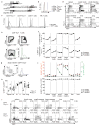
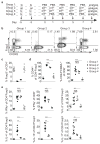

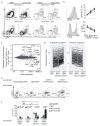
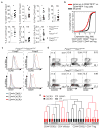
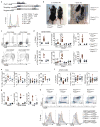
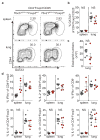
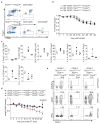
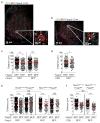
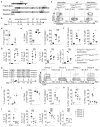


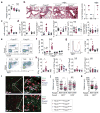
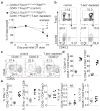

Comment in
-
Regulatory T cells: Subset-specific suppression.Nat Rev Immunol. 2017 Jul;17(7):401. doi: 10.1038/nri.2017.68. Epub 2017 Jun 19. Nat Rev Immunol. 2017. PMID: 28627521 No abstract available.
Similar articles
-
Imbalances in T Cell-Related Transcription Factors Among Patients with Hashimoto's Thyroiditis.Sultan Qaboos Univ Med J. 2017 May;17(2):e174-e180. doi: 10.18295/squmj.2016.17.02.007. Epub 2017 Jun 20. Sultan Qaboos Univ Med J. 2017. PMID: 28690889 Free PMC article.
-
Recovery Profiles of T-Cell Subsets Following Low-Dose Total Body Irradiation and Improvement With Cinnamon.Int J Radiat Oncol Biol Phys. 2015 Dec 1;93(5):1118-26. doi: 10.1016/j.ijrobp.2015.08.034. Epub 2015 Aug 28. Int J Radiat Oncol Biol Phys. 2015. PMID: 26475064
-
RORγt Promotes Foxp3 Expression by Antagonizing the Effector Program in Colonic Regulatory T Cells.J Immunol. 2021 Oct 15;207(8):2027-2038. doi: 10.4049/jimmunol.2100175. Epub 2021 Sep 13. J Immunol. 2021. PMID: 34518282 Free PMC article.
-
Distinct regulatory CD4+T cell subsets; differences between naïve and antigen specific T regulatory cells.Curr Opin Immunol. 2011 Oct;23(5):641-7. doi: 10.1016/j.coi.2011.07.012. Epub 2011 Aug 11. Curr Opin Immunol. 2011. PMID: 21840184 Review.
-
Quantitative analysis of tissue inflammation and responses to treatment in immune dysregulation, polyendocrinopathy, enteropathy, X-linked syndrome, and review of literature.J Microbiol Immunol Infect. 2016 Oct;49(5):775-782. doi: 10.1016/j.jmii.2015.10.015. Epub 2015 Dec 1. J Microbiol Immunol Infect. 2016. PMID: 26748735 Review.
Cited by
-
Phenotypic profiling of human induced regulatory T cells at early differentiation: insights into distinct immunosuppressive potential.Cell Mol Life Sci. 2024 Sep 12;81(1):399. doi: 10.1007/s00018-024-05429-3. Cell Mol Life Sci. 2024. PMID: 39264416 Free PMC article.
-
Evaluation of regulatory T-cells in cancer immunotherapy: therapeutic relevance of immune checkpoint inhibition.Med Oncol. 2024 Jan 18;41(2):59. doi: 10.1007/s12032-023-02289-y. Med Oncol. 2024. PMID: 38238513 Review.
-
Comparative analysis of murine T-cell receptor repertoires.Immunology. 2018 Feb;153(2):133-144. doi: 10.1111/imm.12857. Epub 2017 Nov 27. Immunology. 2018. PMID: 29080364 Free PMC article. Review.
-
The brain's regulators.Nat Immunol. 2025 Apr;26(4):534-535. doi: 10.1038/s41590-025-02116-8. Nat Immunol. 2025. PMID: 40108421 No abstract available.
-
Ocular immune privilege in action: The living eye imposes unique regulatory and anergic gene signatures on uveitogenic T cells.Cell Rep. 2025 Jun 24;44(6):115780. doi: 10.1016/j.celrep.2025.115780. Epub 2025 May 30. Cell Rep. 2025. PMID: 40450686 Free PMC article.
References
-
- Fontenot JD, Gavin MA, Rudensky AY. Foxp3 programs the development and function of CD4+CD25+ regulatory T cells. Nature immunology. 2003;4:330–336. - PubMed
-
- Hori S, Nomura T, Sakaguchi S. Control of regulatory T cell development by the transcription factor Foxp3. Science. 2003;299:1057–1061. - PubMed
-
- Ohnmacht C, et al. MUCOSAL IMMUNOLOGY. The microbiota regulates type 2 immunity through RORgammat(+) T cells. Science. 2015;349:989–993. - PubMed
Publication types
MeSH terms
Substances
Grants and funding
LinkOut - more resources
Full Text Sources
Other Literature Sources
Molecular Biology Databases
Research Materials

